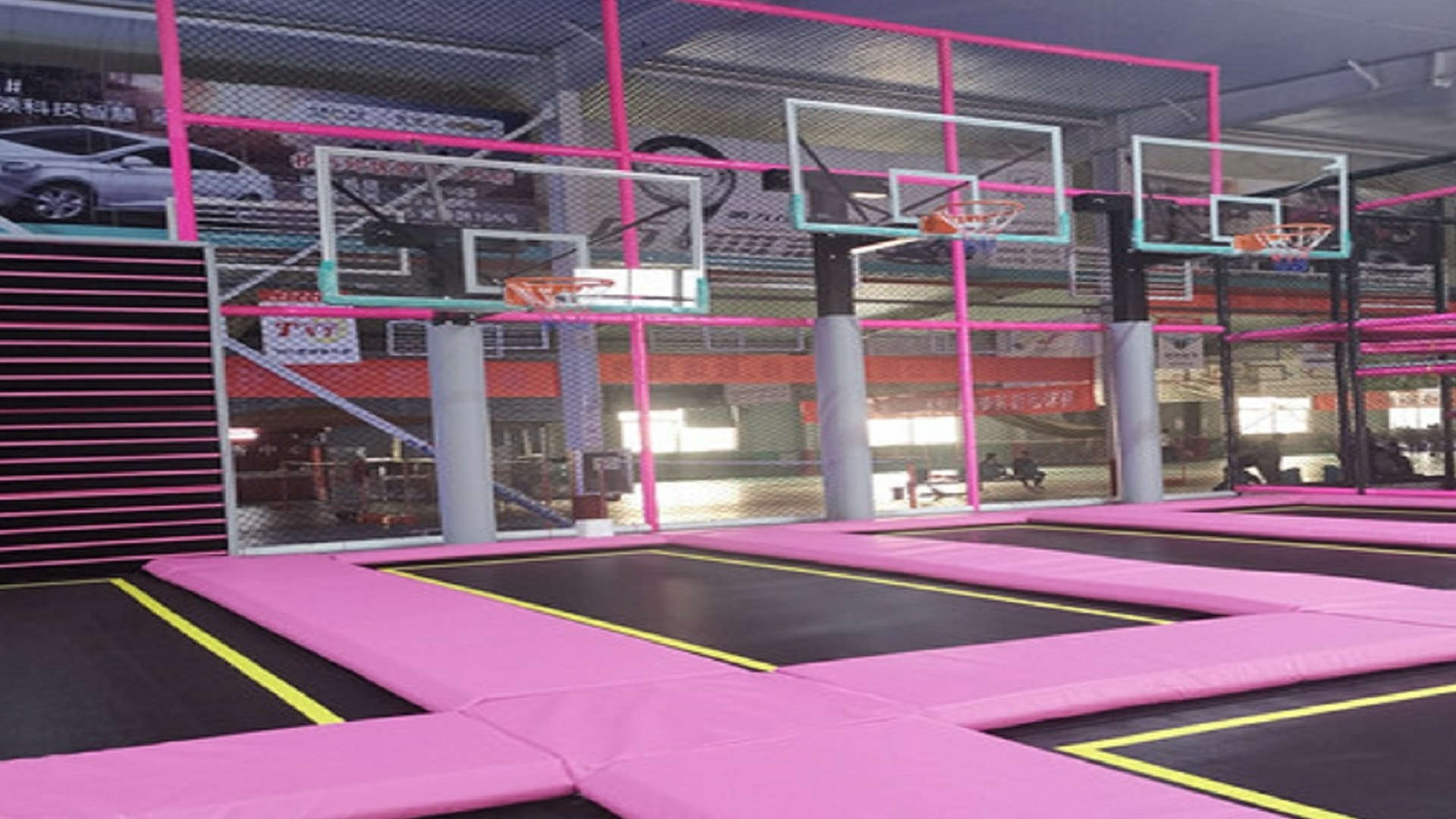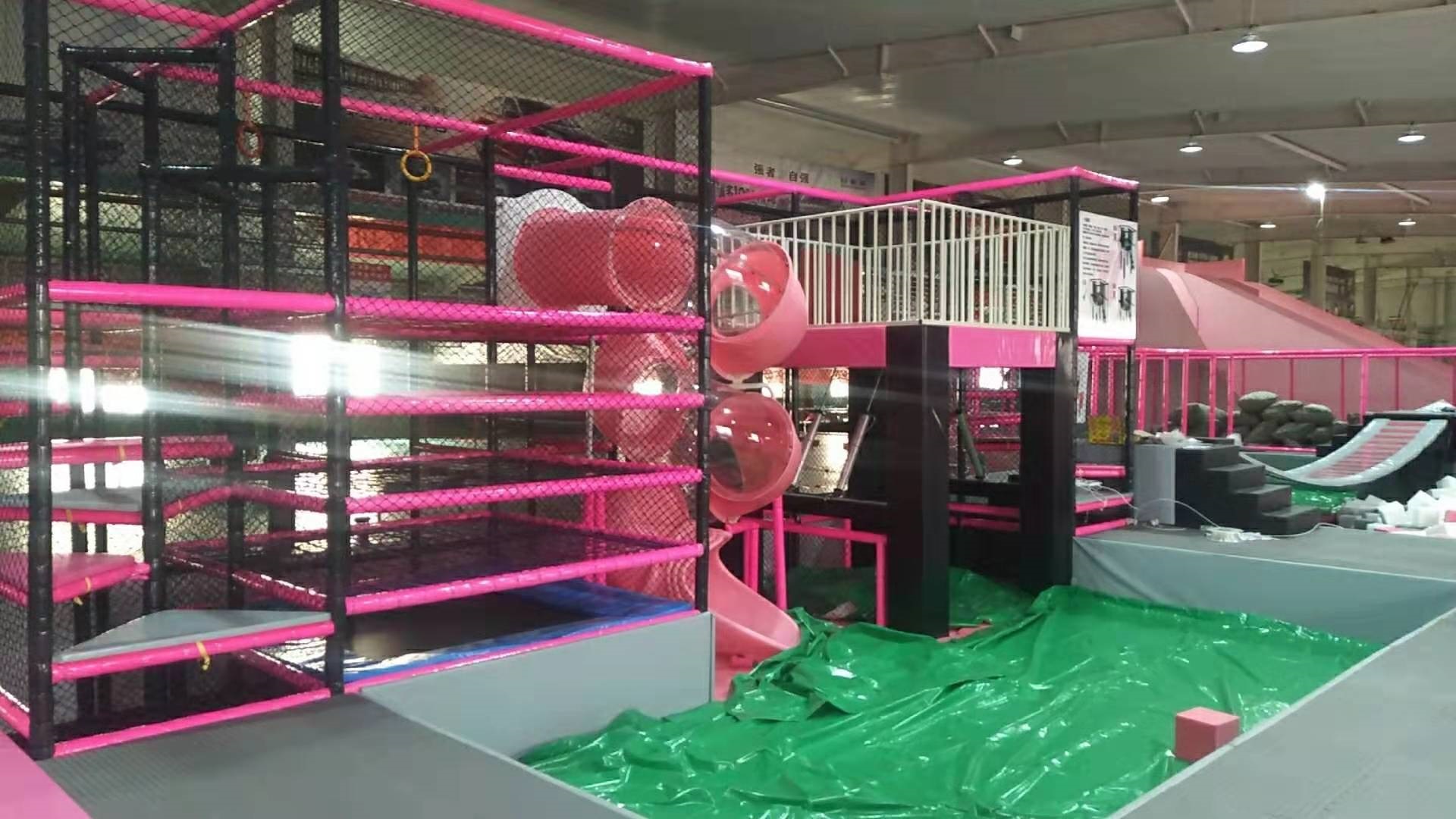5 Biggest Challenges in the Trampoline Park Industry
FEI FAN reveals the 5 biggest challenges in the indoor trampoline park industry: safety, maintenance, staffing, regulations and profitability. Practical insights and solutions to help operators improve safety, compliance and long-term revenue growth.
The trampoline park industry has become one of the fastest-growing segments of the global family entertainment and leisure market. Over the past decade, indoor trampoline parks have evolved from simple recreational spaces into fully-equipped entertainment centres offering fitness programmes, group activities and competitive sports. They are undeniably appealing — children, teenagers and adults alike enjoy the thrill of bouncing and flipping in a high-energy, safe and supervised environment.
However, as with any industry experiencing rapid growth, the trampoline park sector faces significant challenges. Operators must meet customer expectations, adapt to evolving regulations, manage operational costs and ensure long-term sustainability. For entrepreneurs or investors considering entering this sector, it is crucial to understand the biggest challenges in the indoor trampoline park industry in order to succeed.
Below, we examine five of the most pressing challenges and explore strategies that operators and business owners can adopt to overcome them.

1. Safety and Risk Management
Safety is undoubtedly the most critical challenge for any indoor trampoline park. Unlike traditional playgrounds, trampoline parks involve high-impact activities that carry an inherent risk of injury. If safety guidelines are not strictly enforced, sprains, fractures and concussions are possible.
Common Safety Concerns
- Collisions: Multiple participants jumping simultaneously increase the risk of mid-air collisions.
- Improper landings: Flips, somersaults, or off-balance landings can result in injuries.
- Equipment wear and tear: Worn-out springs, nets, or padding can compromise safety.
- Overcrowding: Allowing too many people in one area significantly raises accident risks.
Industry Standards and Compliance
Most developed countries have implemented or are in the process of adopting safety standards for trampoline parks. For example:
- ASTM International F2970 Standard outlines design, manufacturing, installation, operation, and maintenance requirements.
- In Europe, EN 13219 and EN 913 provide similar frameworks for trampoline equipment.
Best Practices for Safety
- Regular Inspections: Daily checks of trampolines, mats, and padding.
- Staff Training: Employees should be trained in injury prevention, spotting techniques, and first aid.
- Clear Rules: Posting visible signage that limits flips, sets age restrictions, and outlines capacity limits.
- Technology Use: Smart monitoring systems with cameras or sensors can track unsafe behavior in real-time.
Conclusion: Safety isn’t just about compliance—it directly affects a park’s reputation. A single incident can damage customer trust and reduce repeat visits.

2. High Operating Costs and Maintenance
Running an indoor trampoline park requires significant capital investment. The initial investment required can range from $1 million to $3 million, depending on the size of the park, its location, and the amenities it offers. However, costs don't just cover construction and equipment installation.
Key Cost Drivers
- Real Estate: Parks require large indoor spaces, often between 20,000–40,000 square feet. Rental costs in urban areas can be substantial.
- Equipment Maintenance: Trampolines, foam pits, climbing walls, and safety gear must be replaced or serviced regularly.
- Insurance Premiums: Liability insurance for trampoline parks is notoriously expensive due to injury risks.
- Utilities: Lighting, air conditioning, and heating for large indoor spaces contribute significantly to ongoing expenses.
- Labor Costs: Staff must be present for supervision, customer service, and maintenance.
Balancing Revenue and Expenses
Successful operators often diversify revenue streams to offset costs. Examples include:
- Birthday party packages
- Membership programs
- Food and beverage sales
- Fitness classes and trampoline-based exercise sessions
- Corporate events and team-building activities
Maintenance Strategies
Having preventive maintenance schedules and supplier partnerships in place is crucial. By working with reliable vendors, operators can ensure the timely delivery of spare parts and minimise downtime. Additionally, rotating equipment usage prevents certain trampolines from wearing out faster than others.
In conclusion: Even a popular trampoline park can struggle with profitability due to overwhelming operational costs without effective financial planning.

3. Market Saturation and Competition
The indoor trampoline park industry is booming, but with growth comes competition. In many regions, parks are opening at a rapid pace, leading to market saturation.
Signs of Market Saturation
- Multiple parks within the same city competing for the same customer base.
- Declining customer loyalty as families experiment with different venues.
- Price wars that lower profit margins.
Differentiation Strategies
To stand out, operators must innovate beyond the traditional trampoline concept. Successful differentiation strategies include:
- Themed Experiences: Parks with jungle, space, or futuristic themes appeal to children and families.
- Multi-Activity Centers: Adding climbing walls, ninja warrior courses, VR gaming, or interactive playgrounds.
- Educational Partnerships: Collaborating with schools to integrate fitness and physical education programs.
- Events and Competitions: Hosting trampoline dodgeball tournaments or fitness challenges to attract recurring visitors.
The Role of Branding and Marketing
Investing in strong branding, both online and offline, helps parks to establish authority in competitive markets. Social media campaigns, collaborations with influencers, and family-oriented advertising can help to build a loyal following.
Conclusion: Competition will continue to intensify. Only those that evolve with consumer demand and differentiate themselves will thrive in the long term.
4. Staffing and Training Challenges
The success of a trampoline park depends not only on its equipment, but also on its staff. Staff are responsible for safety monitoring, customer service, organising events, and maintaining the equipment. Unfortunately, hiring and retaining qualified employees remains challenging.
Staffing Issues
- High Turnover: Many trampoline parks hire young, part-time staff, resulting in frequent turnover.
- Training Gaps: Inadequate training increases safety risks and customer dissatisfaction.
- Low Morale: Long shifts, weekends, and evening work can contribute to burnout.
Effective Training Programs
- Safety Certification: All staff should be trained in CPR, first aid, and equipment monitoring.
- Customer Service Skills: Friendly and attentive staff enhance the guest experience.
- Continuous Education: Regular refresher courses help employees stay updated on safety standards.
Motivating and Retaining Staff
Parks that invest in recognising their employees, offering flexible schedules and providing career development opportunities often see higher retention rates. Incentives such as bonuses for safety performance or customer satisfaction also help to create a motivated workforce.
Conclusion: Staff are the frontline representatives of a trampoline park. Without effective hiring, training and retention strategies, even the best-designed park may fail to meet expectations.

5. Adapting to Changing Consumer Preferences
Consumer behavior in the family entertainment industry is constantly evolving. What was popular five years ago may not appeal to today’s tech-savvy children and young adults.
Current Trends Influencing the Industry
- Health and Fitness Awareness: Parents are increasingly seeking active experiences for their children. Trampoline fitness classes for adults are also gaining popularity.
- Technology Integration: Gamified trampolines, AR/VR attractions, and interactive scoring systems are in demand.
- Eco-Friendly Spaces: Families are showing preference for venues that highlight sustainability, such as energy-efficient lighting and recyclable materials.
- Experience Economy: Modern consumers value memorable experiences over material possessions, pushing trampoline parks to offer unique and share-worthy activities.
Challenges in Keeping Up
Constant innovation requires significant investment. Operators who fail to update their facilities risk becoming irrelevant. For instance, a park that only offers basic trampolines may lose the interest of children when competitors introduce ninja warrior zones or immersive digital games.
Strategies for Staying Relevant
- Customer Feedback Loops: Regularly collecting input from families helps identify evolving needs.
- Technology Upgrades: Implementing smart ticketing systems, gamified trampolines, and digital leaderboards.
- Partnerships: Collaborating with schools, fitness organizations, or tech companies to expand offerings.
- Seasonal Events: Rotating attractions during holidays or seasons keeps customers engaged.
Conclusion: Trampoline park operators must continually evolve to remain attractive. The ability to anticipate and respond to consumer preferences will determine long-term success.
Conclusion
The trampoline park industry is an exciting and dynamic sector with plenty of opportunities. However, it is also highly competitive and presents unique challenges. Park operators must be both proactive and innovative to ensure safety, manage high operational costs, address staffing issues, compete in the market, and respond to changing consumer preferences.
For those willing to adapt, the rewards can be substantial. Indoor trampoline parks offer more than just entertainment; they also provide opportunities for health and fitness, social interaction, and family bonding. Addressing these five challenges head-on can help operators secure sustainable growth in a competitive market.
As the industry continues to grow, many operators also seek reliable partners for equipment supply and design. For instance, a manufacturer of indoor playground equipment such as FEI FAN can provide trampoline parks and family entertainment centres with innovative, safe and customisable solutions to help them succeed.

Earning 200,000 RMB Annually with an Indoor Playground? A Complete Guide from Equipment Selection to Operation

The Ultimate Guide to Starting an Indoor Playground Business

Did you do that while running a children's park?
Indoor Playgrounds Trampoline Parks
Can you design different zones for different age groups?
Yes, we create separate play zones for toddlers, children, and teenagers to ensure safety and maximize engagement.
Do you provide international installation and after-sales support?
Yes, we offer on-site installation guidance, professional teams in many regions, and long-term after-sales services worldwide.
Can I upgrade or expand my playground/trampoline park in the future?
Absolutely. Our modular design allows you to expand or reconfigure easily to meet future business needs.
Schools Educational Institutions
How much space is required for installation?
We provide flexible designs that fit both small courtyards and large campus grounds, fully optimized for your available area.
OEM & ODM
Can I customize based on my own layout or concept?
Yes, just send us your venuedrawing or demanding, and we’ll design around it.

This case was produced in 2023 and customized by an African customer. Based on the customer's local weather and site conditions, a snow park was designed. Through one-on-one design services, this snow park was ultimately purchased at a reasonable price.

Kids Soft Indoor Playground Equipment Features:
This theme is usually at a height of 5-8 meters or more and can be combined with the new macaroon theme and space theme to create a children's theme park that combines leisure, play, and expansion.

Kids Soft Indoor Playground Equipment Features:
This forest-themed series contains trampolines, climbing nets, tree-hole slides and animal decorations, full of surprises. Kids can boost physical coordination while sparking creativity through role-play here.

Kids Soft Indoor Playground Equipment Features:
The ocean-themed series has colorful coral climbing frames, slides, inflatable trampolines, and marine creature decor. Kids frolic “under the sea,” which helps build their strength, balance, curiosity, and teamwork.
Get in touch
Let’s Build Your Dream Indoor Playground Together
Thank you for your interest in our products and services!
We’re dedicated to providing you with the best possible support and solutions for your needs.
© 2025 Feifan Amusement Equipment. All Rights Reserved.

 Scan QR Code
Scan QR Code